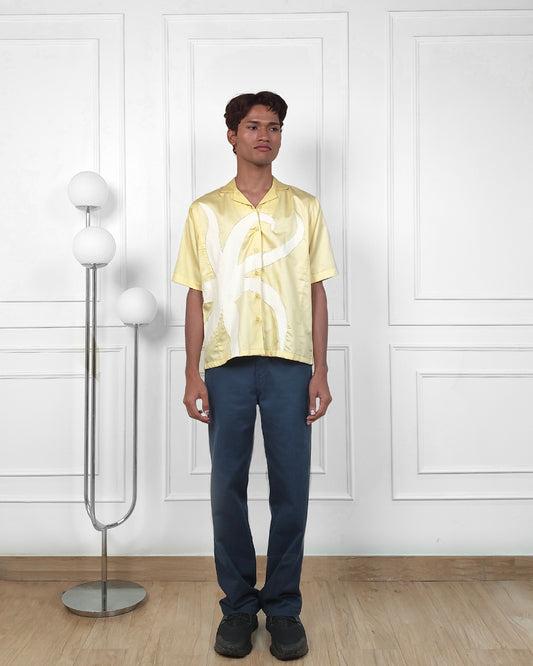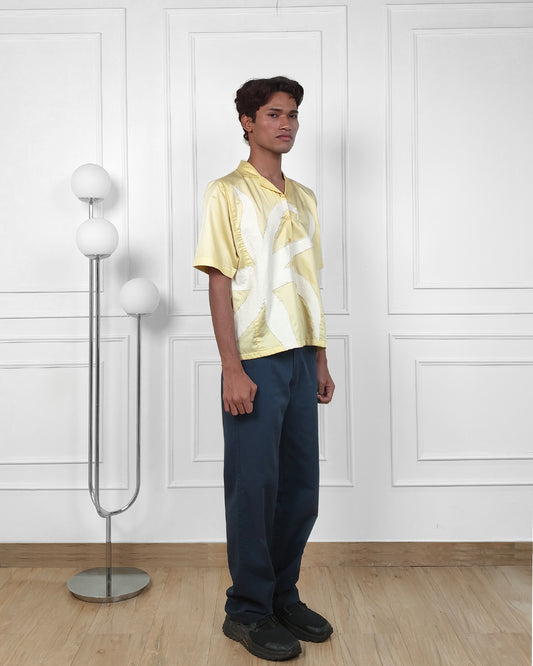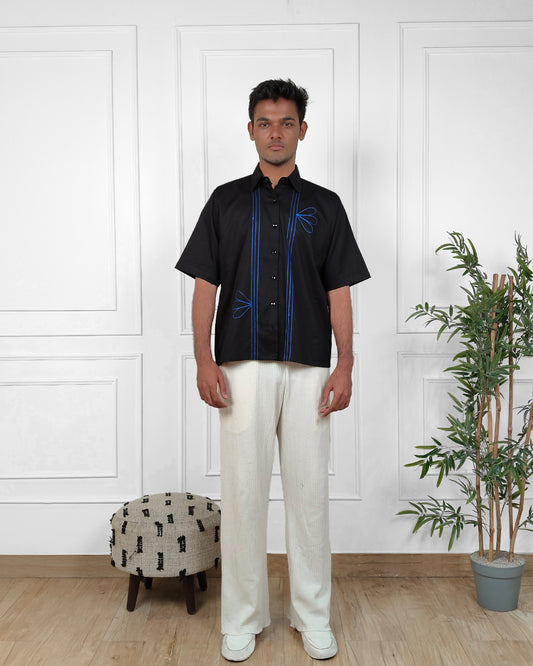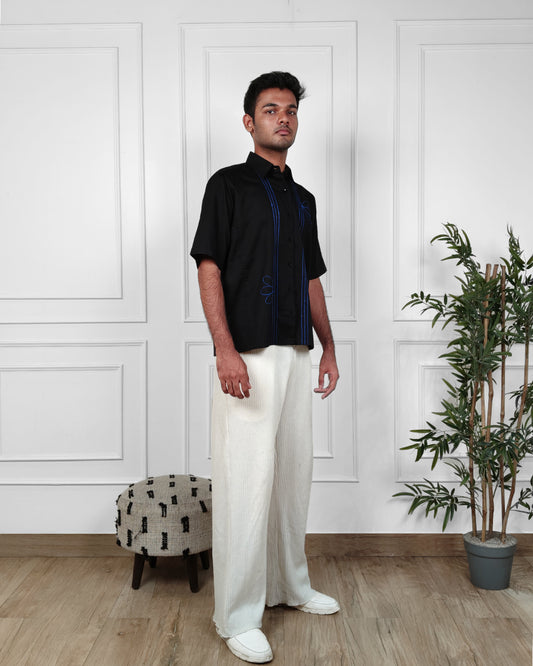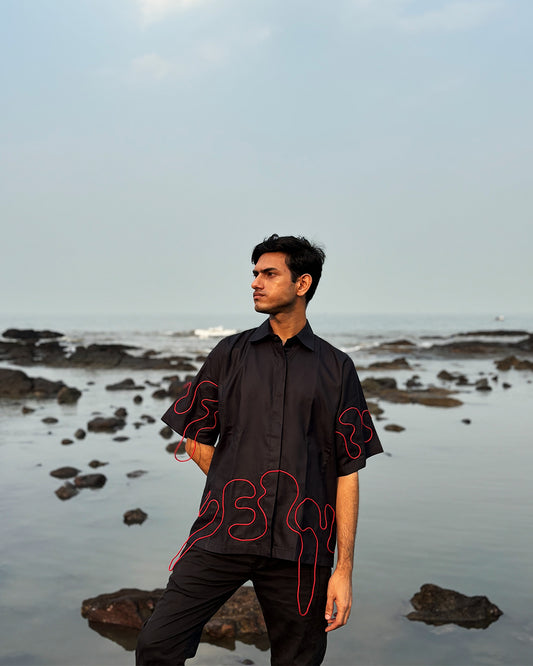
A Beginner’s Guide to Sustainable Fashion: What You Need to Know
As the world grapples with climate change and environmental degradation, the fashion industry stands out as a significant contributor to these issues. Fast fashion, characterized by rapid production and consumption, has far-reaching effects on our planet. However, as consumers, we have the power to make more sustainable choices. This guide will equip you with practical tips for building a sustainable wardrobe, focusing on mindful purchasing, capsule wardrobes, and supporting brands like ODITE that prioritize sustainability with a focus on blending tradition and innovation.
The Environmental Impact of Fast Fashion
Understanding Fast Fashion
Fast fashion refers to the quick turnover of inexpensive clothing collections that mimic runway trends. This business model leads to overconsumption and waste, with an estimated 92 million tons of textile waste generated globally each year (Ellen MacArthur Foundation, 2021).
Key Statistics:
- Water Usage: The fashion industry is responsible for consuming 2,700 liters of water for the production of a single cotton shirt, enough for one person to drink for two and a half years (UNESCO, 2018).
- Carbon Emissions: It accounts for about 10% of global carbon emissions, making it a significant contributor to climate change (UN Environment Programme, 2019).
- Microplastics: The industry releases 500,000 tons of microfibers into the oceans every year, harming marine life and ecosystems (Ocean Conservancy, 2020).
Ill-Effects of Fast Fashion
- Waste Generation: Approximately Fashion generates 92 million tons of waste annually, much of which ends up in landfills (Ellen MacArthur Foundation, 2021).
- Labor Exploitation: Fast fashion often relies on cheap labor in developing countries, leading to poor working conditions and exploitation.
- Environmental Degradation: Chemicals used in dyeing processes contaminate water supplies, and deforestation occurs to make way for cotton fields.
How to Make Mindful Purchases
Building a Sustainable Wardrobe
To create a sustainable wardrobe, consider the following tips:
1. Assess Your Current Wardrobe
- Take inventory of what you already own.
- Identify pieces you rarely wear and consider donating or recycling them.
2. Adopt a Capsule Wardrobe
A capsule wardrobe consists of a limited number of versatile pieces that can be mixed and matched. Here’s how to start:
- Choose Timeless Styles: Opt for classic cuts and neutral colors that won’t go out of style.
- Focus on Quality: Invest in high-quality pieces that will last longer and withstand wear and tear.
- Limit Trends: Avoid trendy items that will quickly become outdated.
3. Prioritize Sustainable Brands
Support brands that focus on sustainability, like ODITE, which blends traditional craftsmanship with modern innovation. Here’s how to find these brands:
- Research Certifications: Look for brands with certifications like Fair Trade, GOTS (Global Organic Textile Standard), or B Corp.
- Read Brand Stories: Brands that share their sustainability journey often have more authentic practices.
Shopping Mindfully
When shopping, keep these guidelines in mind:
4. Choose Sustainable Fabrics
Understanding the materials can make a significant difference in your impact. Here are some sustainable options:
- Organic Cotton: Grown without synthetic pesticides or fertilizers.
- Tencel (Lyocell): Made from sustainably sourced wood pulp, using a closed-loop production process that minimizes waste.
- Hemp: Requires less water and no pesticides, making it an eco-friendly choice.
- Recycled Fabrics: Fabrics made from post-consumer waste, such as plastic bottles.
5. Consider Second-Hand Shopping
Thrifting or purchasing second-hand clothing helps reduce waste and gives garments a second life. Here are some popular platforms:
- Depop: A mobile app for buying and selling second-hand clothing.
- ThredUp: An online consignment store with a wide selection of pre-loved items.
- Local Thrift Stores: Visit local shops to find unique pieces at lower prices.
Support Smaller Brands Over Corporations
Shopping from small, sustainable brands often leads to more ethical practices. Here’s why you should prioritize smaller companies:
- Transparency: Smaller brands are often more transparent about their sourcing and manufacturing processes.
- Community Impact: Supporting local businesses helps strengthen the economy and creates jobs in your community.
Styling Tips for Sustainable Fashion
How Styling Enhances Sustainability
Stylish outfits can be created without compromising on sustainability. Here are some tips:
6. Mix and Match
- Use a few key pieces to create multiple outfits.
- Pair a classic white shirt with different bottoms to switch up your look.
7. Layering
- Layering not only adds depth to an outfit but also extends the usability of your wardrobe.
- Use cardigans, vests, or scarves to create different looks with the same base.
8. Accessorize Mindfully
- Invest in high-quality accessories that can elevate any outfit.
- Consider handmade or artisan pieces that support traditional crafts.
Location-Specific Considerations
United States
- Consumer Awareness: In 2020, a survey showed that 66% of Americans were willing to pay more for sustainable brands (Nielsen, 2020).
- Recycling Rates: Only 15% of textiles are recycled in the U.S., indicating a need for more awareness and action.
United Kingdom
- Fast Fashion Costs: The average UK household spends about £1,700 a year on clothing, with much of it being fast fashion (Wrap, 2020).
- Sustainable Choices: A growing trend shows that 61% of UK consumers want to see more sustainable options (Mintel, 2021).
Australia
- Textile Waste: Australians throw away approximately 6,000 kg of clothing every 10 minutes (Planet Ark, 2020).
- Sustainable Brand Growth: There’s an increasing demand for ethical brands, with 45% of consumers indicating they would buy from sustainable companies (Sustainable Fashion Australia, 2021).
Europe
- Regulations: The EU is pushing for stricter regulations on textile waste, aiming for a circular economy in fashion (European Commission, 2020).
- Consumer Preferences: Studies indicate that 70% of Europeans are influenced by sustainability when making fashion purchases (European Investment Bank, 2021).
Japan
- Cultural Shift: Japanese consumers are increasingly interested in sustainable fashion, with 40% actively seeking eco-friendly brands (Deloitte, 2021).
- Textile Recycling: Japan has one of the highest textile recycling rates in the world, showing a commitment to sustainability.
Conclusion: Your Role in Sustainable Fashion
As a consumer, your choices can have a significant impact on the fashion industry. By adopting mindful purchasing habits, embracing sustainable fabrics, and supporting small brands like ODITE, you can contribute to a more sustainable future. Remember that every small action counts, and together, we can reshape the fashion landscape for the better.
References
- Deloitte. (2021). The Future of Fashion: Trends Shaping the Industry in 2021.
- Ellen MacArthur Foundation. (2021). A New Textiles Economy: Redesigning Fashion's Future.
- European Commission. (2020). A New Circular Economy Action Plan for a Cleaner and More Competitive Europe.
- European Investment Bank. (2021). EIB Investment Report 2021/2022.
- Nielsen. (2020). The Sustainability Imperative: New Insights on Consumer Expectations.
- Ocean Conservancy. (2020). Plastics in the Ocean: Impacts on Marine Life.
- Planet Ark. (2020). National Recycling Week Report.
- Wrap. (2020). The Clothes Consumption Crisis: Fast Fashion in the UK.
- UNESCO. (2018). Water and Fashion: The Hidden Cost of Clothing Production.
- UN Environment Programme. (2019). Fashion and Sustainability: Understanding the Impact of Fashion on the Environment.
By implementing these strategies, you can cultivate a wardrobe that reflects your values while contributing to a healthier planet. Remember, sustainable fashion is not just a trend; it’s a movement towards a more responsible and ethical way of living.

